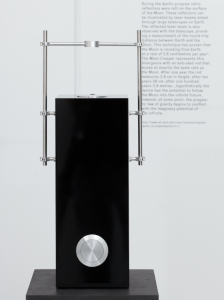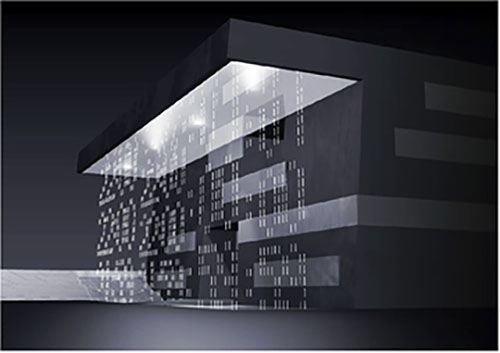Hey guys,
If you don’t know, GitHub has an sign-up option for students, which in the past included their Micro Plan for free. They’ve just updated it with a ton of new promotions, including:
- A free GitHub Micro plan
- $100 credit at DigitalOcean, a VPS provider (I use them to host my websites)
- $25 for HackHands, live programming help 24/7
- A free .ME domain from Namecheap
- Waived transaction fees from Stripe
- Free private builds from Travis CI
- The Unreal Engine for free
There’s more there, too.
Sign up at education.github.com/pack, like right now.
Here’s a link to the github repo with Eric’s example code from last week. This should get you started using OSC and Serial communication within openFrameworks on your laptop.
Github Repo
Idea-
Create a data visualization of an everyday far away space phenomenon in physical reality.
Similar Projects that I found
LIGO
ART
Cosmic Gravitational waves are detected(data is acquired) and showcased through LEDs. What I like about this project is an unseen or invisible phenomenon is given a physical form.
Moon Creeper: Sublime Gadgets by Auger-Loizeau(2012)

Apollo 11 mission left giant reflectors on the surface of moon. Reflectors can be illuminate by telescope laser beams from earth. The reflected beam is measured to calculate speed of receding moon from earth(3.8 cm per year). Moon Creeper is a visualization of receding moon. What I find interesting in this project is that a subtle motion is chosen and represented as is, and not accelerated in the visualization.
The Asteroid Impact Probability Drive.
the asteroid impact probabilty drive from luckytwentythree on Vimeo.
The device shows potentially hazardous astroids rotating around earth and shows warnings when their orbit matches with that of earth. Device Highlights that our lives our result of giant probabilistic equation. There are so many things that can go wrong and yet we go on living our lives as if we are immortal.
Academia
This paper by Stéphanie Fleck and Gilles Simon defines augmented reality platform for young children to learn astronomy. Every market corresponds a planet in the solar system. The augmented objects react based on their position and distance with respect to each other, real time.
Very intriguing approach to making the digital world physically interactive. Not sure I want to do something like this really. It seems a bit too literal somehow, and limited. It’s not a design tool as they have it now.
More
For my final project, I am interested in working with the idea of serendipity and the kinds of interactions that can be built around this concept. Because of the sensors we have access to both in our cell-phones and in the prototyping tools we are using (RPi and Arduino) the opportunities for facilitating happy accidents opens up. We can use sensors to determine where people are, what they are doing, how active they are… We can connect with each other’s devices and exchange these data and based on it take actions. So I want to focus on these data, the interactions between devices and the way that serendipity can be prompted by them. Some examples I am looking at from different fields:
From Industry – Wakie, a social alarm clock: You set a time you want to wake up and when the time comes, some random person logged in the app who wants to wake someone up at the time you set will call you from the app. It works the other way too, anytime you sign into the app, it will tell you how many people would like to wake up around the World and you can just click on “wake someone up”

From Art – Serendipity is a project developed by Kyle McDonald while in residency in Spotify. The project detects when two strangers in the world click on play at the same exact time on a song on Spotify and then shows the locations on a map. About once a second the song being shown changes to show a new song simultaneously started in two places around the World.

From Academia – 20 Day Stranger: A project by the MIT Media Playful Systems Group, for a period of 20 days, it connected pairs of strangers in the world and had them share their day to day experience with each other.
Potential tech to emulate or use:
Bluetooth Shields
Estimote Beacons estimote.com/
OSC for data
GPS tracking?
Industry
www.youtube.com/watch?v=oWu9TFJjHaM&list=PLTrr4Q-tY8MAShUUpJi0Uw5s3E2wsmEen&index=1
I’m should receive a Myo developer kit from Thalmic Labs this week. I’m interested in exploring the capabilities of this input device. Gestural controls have interested me for some time. Beyond their ability to allow more natural motion to control a computer, they bring
I am interested in the social and psychological implications of the added physicality they enable in our interaction with computers. In particular, Keeping Together in Time: Dance and Drill in Human History by William McNeil and Interaction Ritual Chains by Randall Collins come to mind. Both works discuss the role of rhythmic movement in creating solidarity in small groups.
Academia
1) Keeping Together in Time: Dance and Drill in Human History by William McNeil
www.hup.harvard.edu/catalog.php?isbn=9780674502307
2) Randall Collins: Interaction Ritual Chains (2004)
Book Review: www.cjsonline.ca/reviews/interactionritual.html

3) World Kit by Chris
Art
www.creativereview.co.uk/cr-blog/2008/april/interactive-art-gallery-for-international-train-travellers
Making Things Interactive: Assignment 2 from Ryan B. on Vimeo.
For our second project, we were tasked with making a spy device using Raspberry Pi. This was my and Danita’s first time working with Raspberry Pi.
We created a motion sensing spy device using the Raspberry Pi, an oatmeal container, a PS3 Eye camera and a passive infrared (PIR) sensor. We used the WiringPi mapping for the GPIO pins to take in data from the PIR sensor and camera. It took us a while to get consistent results with these pins until we realized that one of the pins we were using had a built in pull up resistor. Changing pins did the trick.
We definitely pushed the Raspberry Pi’s processing power to its limits at times in the development process, but in the end we had a system that can consistently capture and store and transfer photos of passers by.
by Ryan and Danita
RasPI GPIO Demo from Dan Russo on Vimeo.
This example demonstrates the use of physical input (GPIO pins) to activate an on screen graphic response. All of the computation is completed by the raspberry pi, which is utilizing open frameworks to generate the graphics and access the digital read pins. There are 3 buttons (momentary) that each activate a different geometry. The buttons can be activated separately or in various combinations to alter the graphic.
This was my first experience using raspberry pi and open frameworks, as well as any programing interface that uses true C++. One of the most crucial things I learned while working through this demo, was the process of coding and compiling C++. Learning the role of the uncompiled file structure was a rewarding experience that allowed a closer look into how the programming language utilizes memory allocation. The use of the Raspberry Pi’s GPIO pins was also a crucial learning portion of the demo. The GPIO interface of the Raspberry Pi differ’s from other micro controllers in some ways, so dealing with a more complex process provided a better look into wiring switches and sensors to digital read inputs.








